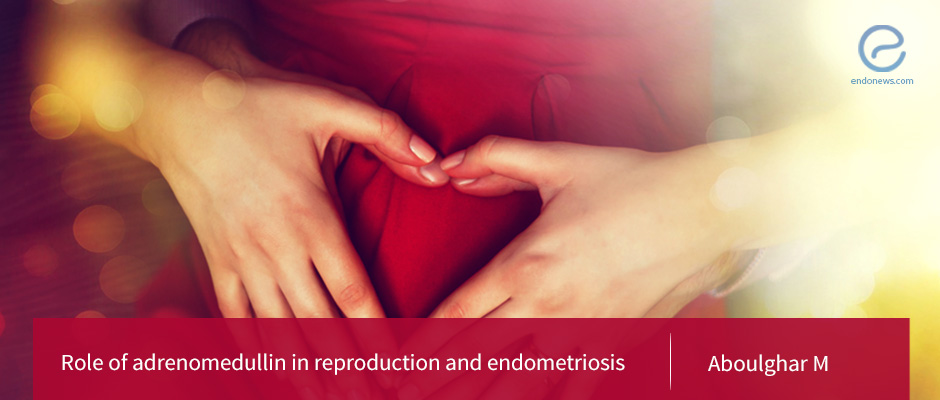Adrenomedullin: The Pervasive Peptide
Aug 1, 2018
Adrenomedullin is ever present in the woman's reproductive tract and levels of this peptide can help improve pregnancy outcomes, but it may not help with the advancement of endometriosis care.
Key Points
Highlights:
- This paper delineates the function played by Adrenomedullin (AM), a peptide, in female reproduction and endometriosis.
Importance:
- Endometriosis and the ability to reproduce can greatly impact an individual’s quality of life, so it is important to understand what can adversely affect endometriosis and reproduction.
What’s done here?
- This article compiles information from various sources, including pertinent publications and professional opinions, to provide the reader with a comprehensive overview of the topic in question.
Key points:
- General information regarding AM: a peptide that is synthesized as a part of the precursor preproadrenomedullin, found in the plasma of healthy patients, can be elevated in several morbidities.
- Several factors are responsible for the upregulation of AM production: it has various biological systemic functions and it is responsible for promoting various physiologic actions
- Reproduction: AM is present at different times and places in the female reproductive system. AM levels in the serum and follicular fluid can help establish embryo and oocyte quality. When it is not enough, AM can cause subfertility. Furthermore, AM administration prior to implantation can improve various facets of conception and pregnancy.
- AM and Endometriosis:
- AM levels in the ectopic endometrium of patients with endometriosis were found to be higher than the levels of AM in eutopic endometrium.
- Women with endometriosis have higher mid-regional (MR) pro-AM levels in their plasma. These levels do not correlate with the stage of the disease.
- Plasma level of AM did not chance after surgical excision of endometriosis, which indicates a source for AM other than the ectopic endometrium.
- Midregional (MR) pro-AM could not be used as a diagnostic tool for endometriosis because it is elevated in many conditions.
Lay Summary
Dr. Aboulghar, from the Cairo University, recently penned an article titled “Role of adrenomedullin in reproduction and endometriosis” that was published in Fertility and Sterility. This article looks at the function of Adrenomedullin (AM) in pregnancy and endometriosis and it discusses AM’s use as a diagnostic tool.
The first section focuses on some key characteristics of the peptide. This includes its function in biological systems and its physiologic functions. The author also makes note of the locations at which AM could be found and its abundance in healthy patients and patients with several different conditions.
The next section focuses on the role of AM with respect to reproduction. AM exists throughout the reproductive system in different phases. AM levels can be used to test fertility as it is an indicator of oocyte and embryo quality. AM can be administered before implantation, which would improve the outcomes of conception and fertility.
The next section discusses the role of AM with respect to endometriosis. AM was found in increased levels in the ectopic endometrium in women with endometriosis. Women with endometriosis also had increased mid-regional (MR) pro-AM in their plasma, but these levels did not correspond with disease severity. Surgical removal of endometriosis did not affect AM levels in the plasma. This points to the fact that AM is in fact in the uterus and that AM cannot be used as a tool to monitor endometriosis post-surgery.
AM cannot be used as a diagnostic tool for endometriosis because the AM levels can be increased for various different morbidities.
Research Source: https://www.ncbi.nlm.nih.gov/pubmed/29935635
Adrenomedullin reproduction peptide pregnancy implantation MR pro-AM

